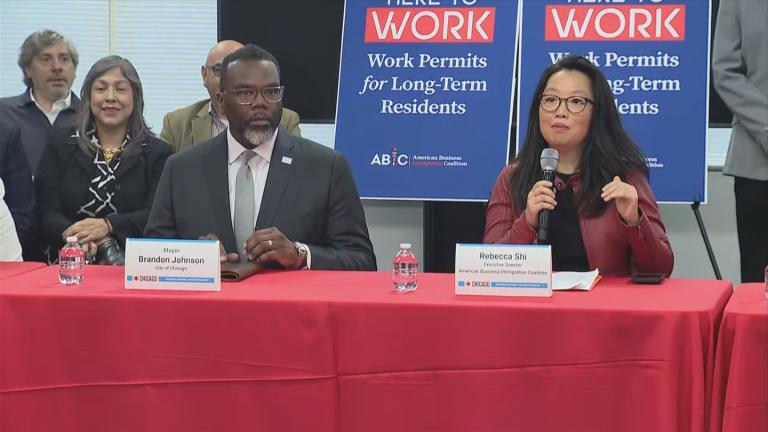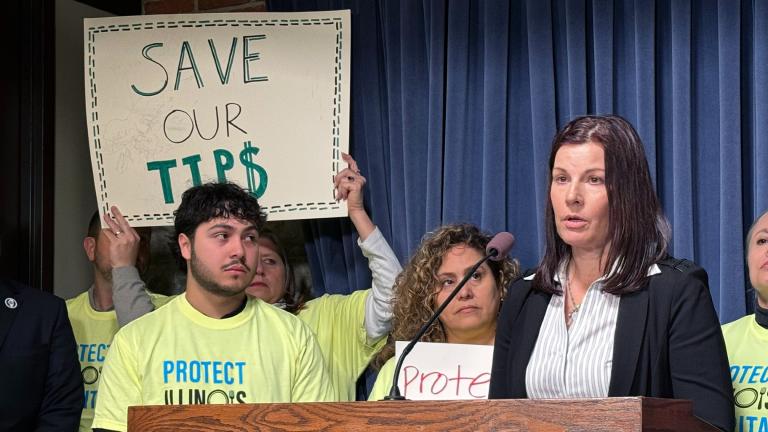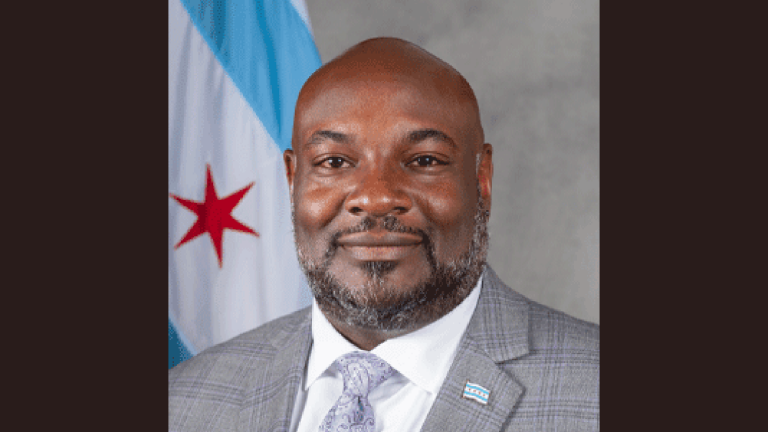It wasn’t originally on the school calendar, but Evanston/Skokie District 65 is out all this week – not just the previously planned fall break on Thanksgiving and the day after.
Parents were notified in a letter Friday that even with substitutes and central office staff pitching in, schools couldn’t safety operate, especially with pandemic guidelines.
“This decision was made both in the interest of safety and the mental health of our team,” Superintendent Devon Horton wrote. “Based on numbers received today, we do not have adequate staffing or sub coverage to provide the necessary care or to support high quality learning next week. We believe this is a result of educators and support staff needing to rest and focus on mental health and also to tend to their own families.”
It’s a sign of what President of the Illinois Association of Regional Superintendents of Schools Mark Klaisner says is an educator shortage statewide. The association’s survey of its members found it’s a major stress. The numbers may be higher in Chicago and suburban schools, but for a rural school with 100 students, a single teacher absence can account for 20% of the school’s staff.
Shortages can lead schools to make decisions like canceling electives or credit courses like auto shop and cosmetology, moving students into a massive study hall that require less staffing, increasing class size or moving to split, partial day classes.
“One of my superintendents said ‘You know Mark, I don’t have enough teachers to fill classrooms so I’m putting my paraprofessionals in the classrooms. And I don’t have enough paraprofessionals to meet the needs of kids so I’m putting substitutes in as paraprofessionals. Which means I don’t have enough substitutes, which means my administrative team is now substituting in classrooms,” Klaisner said.
Data from the Illinois State Board of Education shows more than 4,120 unfilled positions in schools statewide, including 1,700 teaching posts.
If there were more teachers, Klaisner said there would be less of a stress on subs.
“The pandemic certainly exacerbated the situation, whether that’s medical issues or fear or concern for one’s own health or even political alignments – lately that’s been a problem as well. And it’s not as easy a job as people would think,” Klaisner said.
Another issue: Pay.
Klaisner says on average, subs are paid about $100 a day. At CPS it’s about $180 for a day-to-day sub.
Given what’s needed to do the job as well as the licensing requirements, Chicago Public Schools substitute teacher Michelle Gunderson said that’s not enough.
“You can’t treat substitutes as something on the back burner and then not realize that there’s going to be a crisis along the line. It has to be something that’s treated as a priority,” Gunderson said.
She said last year, before the vaccine when in-person class was optional, a joint agreement between the Chicago Teachers Union and CPS meant that every school had someone as a permanent substitute, or what’s known as a cadre. But those positions were eliminated for this academic year, which Gunderson said is a “travesty” given that the district had gone through the painstaking process of onboarding them.
With school-based budgeting, most principals can’t afford to allocate money from their budgets for a floating sub. Gunderson said the district should pay for a cadre substitute for each school.
“An extra person in a building is never wasted money. An extra person you can rely on, who is qualified, who is part of the fabric of the building,” Gunderson said. “That’s a treasure and that is a person that needs to be retained, and honored and kept, not laid off.”
Gunderson on Monday taught a third-grade class at the CPS school from which she’d retired.
“Our biggest resource really is our retired teachers,” Gunderson said. “We know the children, we know the district, we’re qualified, we already have our licensure. But when I retired I did not receive a letter, an invitation, ‘please come sub with us, here’s how you do it.’”
Gunderson said the district should be working to remove every barrier in an effort to staff up, including proactively reaching out to retirees and making it easy for them to return.
Some efforts have been made on that front: Retired teachers can now teach more often without getting their pensions nicked.
CPS also offers an extra $420 to those who take on a dozen teaching assignments in a month.
The bonus is doing the trick, says Katherine Konopasek.
“There were 500, 600, 700, I even saw 900 openings one time,” she said. “That (the bonus pay) really made a difference. Because now I see on the system, on the online system that we’re supposed to use, I see that there has been a reduction in the need for subs.”
Konopasek is a retired CPS principal, who last year subbed 115 days —just under the limit that would otherwise ding her retirement benefits.
She too worked as a substitute teacher on Monday.
But she’s in her 60s and has other COVID-19 vulnerabilities.
She said some would-be subs may fear going to the classroom because of health concerns, including because most teachers are women, which means they frequently serve as family caregivers and are apt to worry about bringing the coronavirus home to an older relative or child too young to be vaccinated.
“So it was scary, and it is still to some degree. And there’s much going on where our teachers are feeling burnt out. Our substitutes are feeling burnt out,” Konopasek said. “I’m stopping myself early in December. I’m not going to do the 12 days anymore. I appreciate the incentive but I just can’t, I can’t keep up with it. I’m tired. I’m saddened by some of the things we see.”
Konopasek said it’s important that students returned to a brick-and-mortar education, but she said there are more fights and students playing games on their computers and phones than pre-pandemic.
There’s a complexity of reasons behind a lack of subs: Some who previously worked as substitute teachers may be taking advantage of the wider job market, and found full-time work in another occupation altogether; others may instead concentrate their efforts on going into the profession as a full-time teacher.
Teachers may not agree to work as a sub because the particular school with openings on any given day is too far a drive from home.
Other would be-subs may be reticent to pinch hit at schools in areas of the city with higher rates of violence, or that are particularly difficult to work in and have a principal with a bad or bullying reputation.
“A substitute teacher will look at that on the screen and will decide not to go there,” Gunderson said. “Now this becomes a racial issue too, and a problem with the tale of two cities that we have in our school system, because in our tougher-to-staff schools we’ve had a fill rate that’s much less in our schools with white students in them.”
CPS says it does not use teaching assistants as subs.
Konopasek described some actions taken by CPS as valiant, including offering extra pay for those who take assignments in harder-to-staff schools.
Cadre subs are eligible for health care coverage.
Hiring subs full-time is a new strategy other districts are considering.
“Now they may change positions regularly, but if you knew you had every day employment, a full-time job plus benefits for the course of the year, you may be more inclined to do that,” Klaisner said.
At a conference this weekend, there was a lot of talk about how to alleviate the sub shortage, according to Klaisner, with the state regional superintendents group.
“There are a couple states in the country that have now allowed high school graduates who go through a training to be substitute teachers. Frankly, in Illinois we want to be really careful that we don’t dilute the requirements to the point that we’re eroding the level of quality,” he said.
Klaisner said Illinois set the quality bar relatively high, but there are two types of licensure options. A $50 license is good for five years and requires a bachelor’s degree, while a short-term license requires less – either 60 hours of coursework at an accredited college or university, or an associate’s degree.
He also has other ideas, including working to spread the word to those looking for flexible, meaningful work that a degree in education is not necessary to teach on a substitute basis.
Follow Amanda Vinicky on Twitter: @AmandaVinicky








